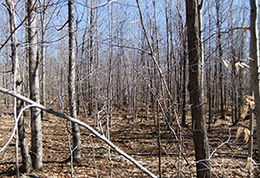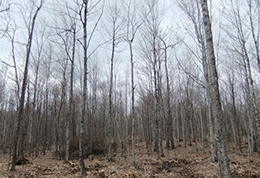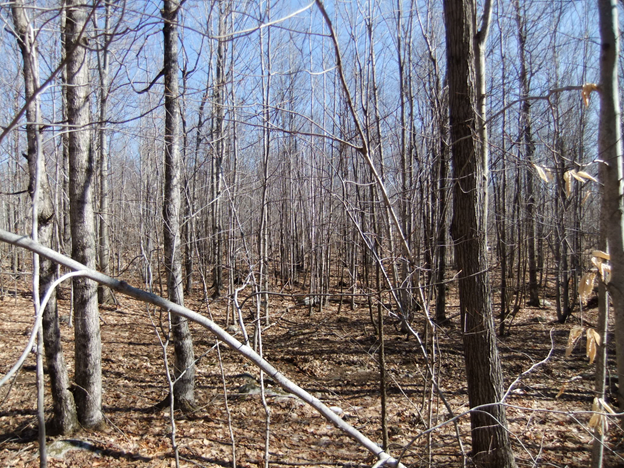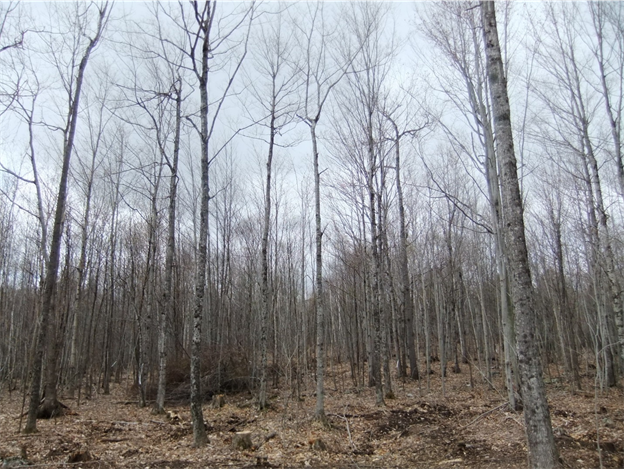DACF Home → Bureaus & Programs → Maine Forest Service → Projects → What will my woods look like? → Thinning and Weeding: Natural hardwood pole stand
Thinning and Weeding
Site: Natural hardwood pole stand

Woodland Owners’ View
There are too many saplings in this stand and too much is beech. The choice would be to thin out the beech, unless they are healthy beech and then save sugar and red maple, birch and other high valued hardwoods.
Logger’s View
This is a marginally commercial operation. With mechanical equipment and a good biomass chip market, the landowner might get a minimal amount of stumpage and the job gets done. If this was done with hand crews the landowner would have to pay for the work, minus a little bit of firewood that could be sold.
Forester’s View
This sapling/pole stand is overstocked and has a high percentage of beech with beech bark disease. Recommend thinning to favor sugar and well-formed red maple, birch and other high-value hardwoods; and weeding out most of the beech, but leave dominant healthy beech for mast.

Woodland Owners’ View
The quantity of saplings in the stand is really good. Over time, they will grow larger and while running a sugar house is an option, there will be other wood options to think about like birch, red maple, and beech products.
Forester’s View
The residual stand is close to optimally stocked with potential sawlog stems of valuable species. The option for sugaring exists, but different management decisions will need to be made for that in the future.
Wildlife Outcome
With a still fairly closed upper canopy, scarlet tanagers and wood thrushes may be seen and heard here.
Equipment Used
Three-wheeled feller buncher, small grapple skidder, chipper.

